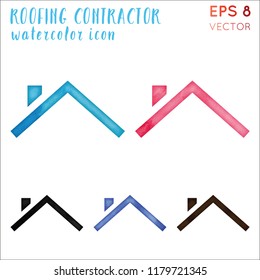Equip Your Wall Surfaces For Paint Using Vital Tips And Techniques That Promise A Beautiful Coating-- Discover The Main Steps To Enhance Your Task
Equip Your Wall Surfaces For Paint Using Vital Tips And Techniques That Promise A Beautiful Coating-- Discover The Main Steps To Enhance Your Task
Blog Article
Writer-Bergmann Bland
When you're prepping your wall surfaces for paint, it's important to follow a systematic process to guarantee a perfect surface. Beginning by analyzing the wall surface for any type of damage; this action can make or break your job. As soon as you have actually recognized any problems, cleaning the surface area effectively is crucial, as a dirty wall can impact paint bond. Afterwards, you'll need to patch any blemishes and use a primer. Yet there are specific strategies and pointers that can elevate your preparation video game-- let's discover those further to attain the best outcomes.
Assessing Wall Surface Problem
Prior to you get your paintbrush, take a minute to analyze your walls' problem. Check for any kind of visible damages like cracks, holes, or peeling off paint. These imperfections can affect just how the paint sticks and looks when it's completely dry. If you discover any type of substantial damage, you'll need to prioritize repair work before diving right into painting.
Look closely at the texture of your walls. Is the surface area smooth, or is there appearance that might require special factor to consider? Smooth walls usually call for less prep, while textured surface areas might require even more time to paint equally.
Also, consider the previous paint job. If the old paint is glossy, it mightn't enable new paint to stick appropriately. You'll want to know if your walls have been repainted with oil-based or water-based paint, as this can impact your choice of guide or paint.
Finally, take note of any kind of dampness concerns. If you see indicators of water damages or mold and mildew, address these problems quickly to avoid additional issues.
Cleansing the Surface area
As soon as you have actually analyzed the problem of your walls, the next action is cleaning the surface. Beginning by gathering your materials: a bucket, cozy water, a mild detergent, a sponge or fabric, and a scrub brush for harder spots.
Begin at the top edge of the wall surface and function your method down. Mix the detergent with cozy water in your bucket, then dip the sponge or fabric into the option. Wring it bent on prevent extreme moisture on the wall surfaces.
As you clean, pay attention to locations that could've accumulated dirt, oil, or finger prints. For exterior office building colors , use the scrub brush delicately to avoid damaging the paint below. Rinse your sponge or towel often in clean water to stop spreading dust around.
After cleansing, it's essential to clean the wall surfaces with a moist towel to eliminate any kind of soap deposit. This action makes certain a smooth surface area for the new paint to adhere to.
Allow the walls to dry entirely before carrying on to the next preparation actions. This extensive cleansing procedure will aid create a fresh canvas for your painting job, ensuring the very best outcomes.
Patching and Priming
Patching and priming are vital steps in preparing your wall surfaces for a fresh layer of paint. Initially, examine your wall surfaces for any kind of holes, cracks, or flaws. Make use of a high-grade spackling compound or patching paste to load these locations.
Apply the compound with a putty knife, smoothing it out so it's flush with the bordering surface area. Permit it to dry totally, and afterwards sand it lightly up until it's smooth and even.
As soon as you have actually covered everything, it's time to prime. https://www.architecturaldigest.com/story/black-paint-shades-interior-designers-use-on-repeat secure the patched areas, ensuring the paint adheres properly and gives an uniform surface. Choose a guide ideal for your wall surface type and the paint you'll be making use of.
Apply the guide using a roller for larger areas and a brush for edges and edges. If your covered locations are substantially big or permeable, you may intend to apply a 2nd coat of primer after the very first one dries.
After priming, let every little thing completely dry completely before proceeding to paint. https://milouuabx.blogdomago.com/32218931/streamline-the-process-of-employing-a-painting-professional-with-important-tricks-that-will-certainly-improve-your-total-project-experience won't just enhance the appearance of your wall surfaces however likewise lengthen the life of your paint work.
Take your time, and you'll be pleased with the outcomes.
Conclusion
By complying with these straightforward actions, you can attain a smooth and professional finish on your wall surfaces. Beginning by examining their problem, then tidy and patch any kind of imperfections before applying guide. Bear in mind to enable adequate drying out time and ensure every little thing is smooth prior to you dive into painting. With the right prep work, you'll establish the stage for a gorgeous change in your room. Now, collect your supplies, breathe in the fresh air, and get ready to paint!
